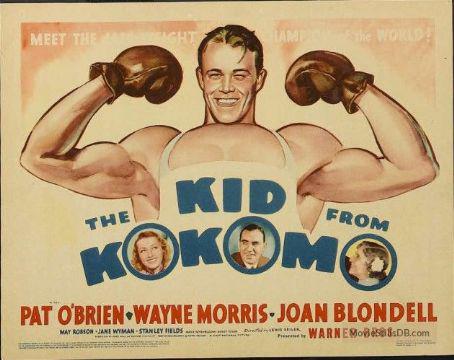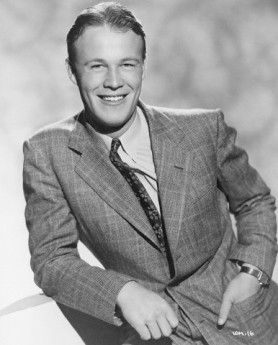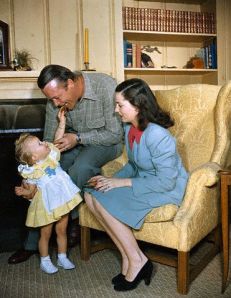In 2011, I announced I was trying to see every film released in 1939. This new series chronicles films released in 1939 as I watch them. As we start out this blog feature, this section may become more concrete as I search for a common thread that runs throughout each film of the year. Right now, that’s difficult.
1939 film: The Kid from Kokomo
Release date: May 19, 1939
Cast: Wayne Morris, Joan Blondell, Pat O’Brien, Jane Wyman, May Robson, Sidney Toler, Maxie Rosenbloom, Stanley Fields, Ward Bond,
Studio: Warner Brothers
Director: Lewis Seiler
Plot:
Fight promoter Billy Murphy (Pat O’Brien) is rarely on the straight and narrow with his fighters. One day he finds Homer Baston (Wayne Morris) on a farm, with a punch so strong that it sends men flying. Why did Homer punch them? Because they said Mother’s Day was a racket. Homer is loyal to a mother that he never knew and hopes one day she will return. Murphy recruits Homer to become a fighter, but Homer is reluctant to leave home in case his mother returns. To con him into fighting, Murphy creates a publicity hunt for Homer’s mother. Just as Homer is about to walk out, Murphy finds Maggie (May Robson), a drunken woman with a criminal past. He convinces Maggie to tell Homer that she is his mother to keep him from fighting. While Homer succeeds with his career, Maggie spends all of his money and bets it on horses.
Homer also meets and falls in love with Marian (Jane Wyman), who comes from a wealthy family and her father (Sidney Toler) is a judge…who recognizes Maggie.
1939 Notes:
• By 1939, Wayne Morris was one of the main contract players at Warner Brothers. He made eight films in both 1937 and 1938, but only two in 1939.
• This was one of six screenplays by Dalton Trumbo filmed in 1939.
Other trivia:
• Adapted from the story “Broadway Cavalier.”
My review: Searching for the “1939 feature”:
This is an entertaining B-movie. I love Wayne Morris as the sweet, naïve farm boy (my heart melted to butter when I saw him carrying a lamb). But May Robson steals the show here as the criminal posing as a mother, who ends up carrying for this sweet guy. May Robson was 80 years old when this film was released, so really she could have been a grandmother to 25-year-old Wayne Morris!
The May 20, 1939, New York Times review by Frank Nugent said “line between comedy and sheer bad taste has rarely been more clearly overstepped than in the Strand’s “The Kid From Kokomo”…which I felt was a bit dramatic. The film is an innocent comedy that perhaps uses a guy’s love for his mother to get him into boxing.
“The Kid from Kokomo” is not a unique film for any of the leads and far from the only film they made in 1939. The only actor in less than three films was Wayne Morris, who only released two films in 1939:
• May Robson: 7
• Jane Wyman: 5
• Pat O’Brien: 5
• Joan Blondell: 5
Though it was released in 1939, “The Kid from Kokomo” has the same brisk feel of most Warner Brothers comedies from 1936 to 1940. The year of release doesn’t make it much different. In fact, Wayne Morris’s role is very similar to his character in the comedy “Kid Galahad” (1937), another film that features Morris plucked from his daily life and groomed to be a boxer.
Once World War II began, this type of fast-paced, con-artist comedy seems to stop being used as a basic plotline theme.
Check out the Comet Over Hollywood Facebook page, follow on Twitter at @HollywoodComet or e-mail at cometoverhollywood@gmail.com






